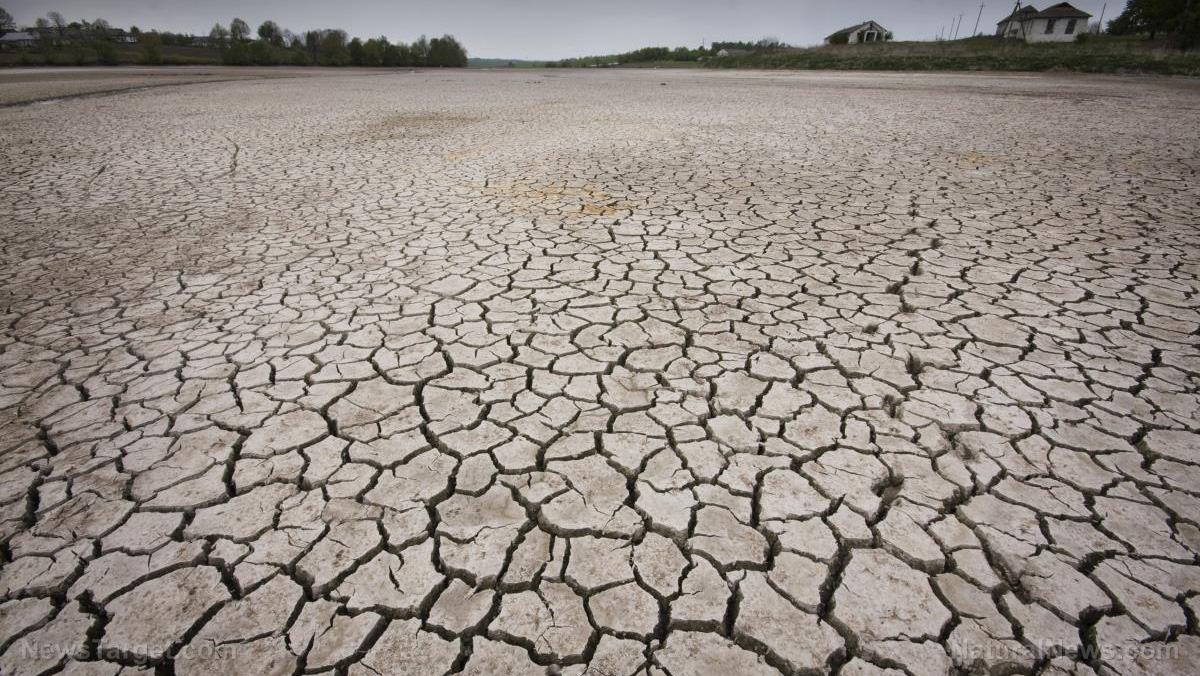If food production ever stopped, the planet would run out of food in just 90 days
04/13/2022 / By Ethan Huff

Most people living in the West right now are blissfully unaware of just how close the world is to seeing widespread famine and starvation. Should food supply inputs continue to falter due to bad weather, inflation, sanctions and other factors, the entire world could run out of food in just three months.
That is not to say three months from now, just to be clear. From the time that food production hypothetically stops due to one major piece of the puzzle falling out of place, the food supply would run dry in just 90 days.
“We are far closer to a potential global cataclysm than most people would dare to imagine,” writes Michael Snyder from The Economic Collapse blog.
“Right now, leaders from all across the political spectrum are openly warning us that a worldwide food crisis is coming. But when people in the western world hear of such warnings, most of them assume that it will just be something that affects poor people in Africa or Asia. Unfortunately, that will not be the case this time around.”
Founder of farming insurance company Climate Corporation says planet only has three months’ worth of food at any given time
Snyder is of the belief, based on his extensive research, that the world is headed into “unprecedented territory” – or what the Bible refers to as the Time of Jacob’s Trouble or the Great Tribulation.
People are going to see and experience things that they never thought possible, especially in “prosperous” nations like the United States where cheap and easy food (relatively speaking), for instance, have been both abundant and uninterrupted. It appears that very soon things will change for the worse.

The first dominoes to fall were the labor force and the supply chains due to the Wuhan coronavirus (Covid-19) plandemic. Lockdowns, business closures, mask mandates and other fascist dictates really got the ball rolling, and now the conflict in Ukraine seems to be taking direct aim at the food supply.
“Global hunger had already been steadily rising for the past couple of years due to the COVID pandemic, and now a confluence of events here in 2022 threatens to create a true global nightmare,” Snyder explains.
“At this moment, we are still eating food that was previously grown, but it is the food that will not be grown in the months ahead that will be the real problem. Because the truth is that we do not have much of a buffer to work with at all.”
“The whole planet Earth operates a 90-day food supply, that means that once we stop making food, humans run out of food in 90 days,” explained Climate Corporation founder David Friedberg in a recent interview with the “All-in” podcast.
Climate Corporation is a farming insurance company, and Friedberg is a former executive at Google. His company assesses this type of thing for underwriting purposes, and the future looks extremely grim.
“The price of nitrogen has gone from $200 to $1,000, the price in potassium has gone from $200 to $700, and the price of phosphorus has gone from $250 to $700. So now it is so expensive to grow a crop, that a lot of farmers around the world are pulling acres out of production. So they’re going to grow less this year than they would have otherwise because it is so expensive and they cannot access fertilizer,” he added.
“Food supplies are going to go down and it is going to be catastrophic.”
Should farmers be forced to try to grow crops without fertilizer, then yields are going to plummet. The long-term impact of this will be catastrophic.
More stories like this one can be found at Collapse.news.
Sources for this article include:
Submit a correction >>
Tagged Under:
90 days, chaos, Collapse, crisis, crops, famine, food collapse, food production, food shortage, food supply, harvest, panic, products, starvation, supply chain
This article may contain statements that reflect the opinion of the author
RECENT NEWS & ARTICLES
COPYRIGHT © 2017 COLLAPSE.NEWS
All content posted on this site is protected under Free Speech. Collapse.news is not responsible for content written by contributing authors. The information on this site is provided for educational and entertainment purposes only. It is not intended as a substitute for professional advice of any kind. Collapse.news assumes no responsibility for the use or misuse of this material. All trademarks, registered trademarks and service marks mentioned on this site are the property of their respective owners.





















